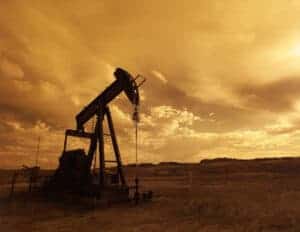There is a 65% chance you are reading this article from your mobile phone in a coffee shop during your 30-minute break from work. Your mobile phone is part of the Internet of Things (IoT) along with billions of physical devices – technology innovations – that are connected to the Internet.
Digital Technology – An Unstoppable Wave That Is Transforming Industries
The innovations introduced by digital technology have continued to change the way we live, formulate decisions, and schedule our day-to-day activities. Technology has slowly chipped away “our limitations”; turning the less improbable into possibilities.
Likewise, the IoT has reshaped the systems – the frameworks and processes – that govern the operations of many industries.
For example, the financial industry has introduced online banking to make it easier for depositors to facilitate transactions and to enhance customer service.
A by-product of this innovation is the proliferation of online payment platforms such as PayPal, Apple Pay, and Payoneer that allow users to send or receive money from anywhere in the world.
Perhaps the biggest representative of how the IoT has shaped the business landscape is the retail industry.
Technology has greatly influenced the buying decisions of consumers to a point that the industry has become the modern-day proof of Darwin’s theory of “Survival of the Fittest” – Adapt or go extinct.
Over the last decade, we have seen many iconic American retailers shut down because they failed – or refused – to acknowledge the rising wave of change brought forth by technology.
All you need to participate in the IoT is a physical device that will enable you to connect to the Internet.
The IIoT And How It Will Reshape The Oil And Gas Industry
The IoT is not just the consumer; it also involves suppliers, creditors, strategic partners, and service providers, the third parties that comprise the business value chain.
If you choose to ignore the IoT, what message are you sending to your customers? How will you improve service and the quality of your products? How can you increase profitability if you don’t introduce innovations that improve productivity and enhance efficiency?
One such industry in the Oil and Gas Industry which has taken the time to open its doors to the advances of digital technology.
It is not because the Oil and Gas industry has been stubborn. The industry is faced with challenges that put the feasibility of adopting digital technology processes into question.
These challenges include:
- Price Volatility
- Increasing Cost of Labor
- Increasing Cost of Raw Materials
- Constricting Effects of Government Regulation
- Unstable Demand
Unless the Oil and Gas industry undergoes technological reforms, it will continue to operate with inefficient and antiquated systems that will drive up costs, compromise the quality of products and services, inhibit productivity, and fail to capitalize on revenue-generating opportunities.
Enter the Industrial Internet of Things – IIoT.
What is the difference between the Internet of Things (IoT) and the Industrial Internet of Things (IIoT)?
The IIoT is the IoT applied to heavily-processed industries such as manufacturing and Oil and Gas.
The physical devices that are connected to the Internet are tasked to find solutions that can help these industries overcome challenges that prevent businesses from achieving success and sustaining profitability.
For example, the IIoT has introduced the following innovations to improve efficiency and increase productivity in these industries:
- Artificial Intelligence
- Machine Learning
- Big Data Technologies
- Process Automation
- Machine-to-Machine Transmission
When an industry invests in IIoT, the devices that are connected to the Internet are tasked to perform the following functions:
- Collect and organize data
- Analyze data
- Transfer data that will be used as the basis in decision-making
What are the 5 ways in which IIoT can benefit the Oil and Gas industry?
1. Improve Functionality
Technology improves functionality by streamlining processes, removing guesswork through the availability of qualified data, and reducing downtime by enhancing the ability to implement troubleshooting solutions.
When you increase productivity, you improve the company’s ability to manage timelines and stay on course with its business development strategies.
For example, if a crucial process breaks down, instead of waiting for days to get it running, the repair and maintenance team can have it operational within hours.
The quick turnaround time will save the company thousands of dollars in opportunity cost and brand reputation.
With more efficient technology-based systems in place, the company can realign more hours and resources to manage tasks and core functions that contribute directly to its bottom line.
2. Increase Profit Margins
As mentioned earlier, the Oil and Gas industry is faced with many challenges such as price volatility, rising costs of production, and unstable demand. These factors create levels of uncertainty that dampen profit margins and inhibit companies from exploring revenue-generating activities.
Let’s cite the cost of labor as an example. The total cost of a full-time employee is calculated at 1.25 to 1.4 times his salary. There are opportunity costs tied to days lost due to illness or tardiness. These costs have to be factored in when determining the actual cost of labor.
By automating processes, you will effectively reduce the cost of labor. Additionally, you increase productivity because machines can work 24/7 with only regular maintenance checks and audits needed to ensure proper operating conditions.
3. Provide Real-Time Information
Access to big data in real-time can be a gamechanger in the Oil and Gas industry. You can immediately find out the average prices of petroleum prices in the industry, the current foreign exchange rate, and the volume of products in the market.
It will be easier for companies to make decisions if they can have the information in their hands as soon as possible. Having immediate access to data will give you a distinct advantage over your competitors.
The availability of real-time information will also spruce up your customer service efforts. Customers, clients, and suppliers will appreciate having their inquiries attended to right away.
Many companies have integrated the use of Artificial Intelligence (AI) chatbots on their websites and social media pages to make it easy and convenient for customers to relay their concerns to them.
4. Improve Safety
Technology can be used to review and evaluate the current safety standards and protocols that are in place to protect the health and well-being of workers in the Oil and Gas industry.
After data has been collected, Safety Engineers can review the information and make the necessary revisions in design. Likewise, there are software programs that can recommend changes in the current framework, measurements, and type of materials used for these processes.
In addition, the use of technology cuts down actual travel time and the need for employees to be onsite to collect data. The procedures can be carried out from a remote location.
5. Introduce Sustainable Solutions
The Oil and Gas industry has been undergoing a revolution over the last few years as there has been a significant shift in demand toward eco-friendly sources of energy such as Natural Gas, Compressed Natural Gas, Electricity, and Bio-Diesel fuels.
It is a revolution that has spurred innovation – in the field of technology to find ways to reduce energy usage, lower the risk of oil spills, cutting down on the release of harmful carbons in the atmosphere, and develop systems that can track and monitor the usage of these resources.
Conclusion
IIoT is the natural evolution of IoT. Similar to the Darwinian Theory, evolution takes place to fulfill a need so that species can adapt to the changing environment.
Digital technology – the driving force behind the IoT – is not a fad or a temporary blip in the world’s evolution. Digital technology is a trend – it is here to stay.
If you want to remain competitive and become profitable, you must have systems in place that will act as a hedge versus uncertainty.
The IIoT will provide the Oil and Gas industry the tools, processes, and the technology it needs to protect itself from the challenges it faces as it continues its venture into an unpredictable, uncertain, and unstable future.



